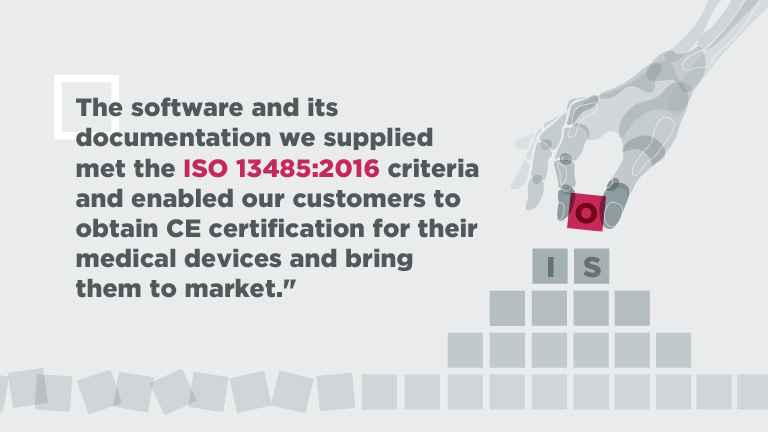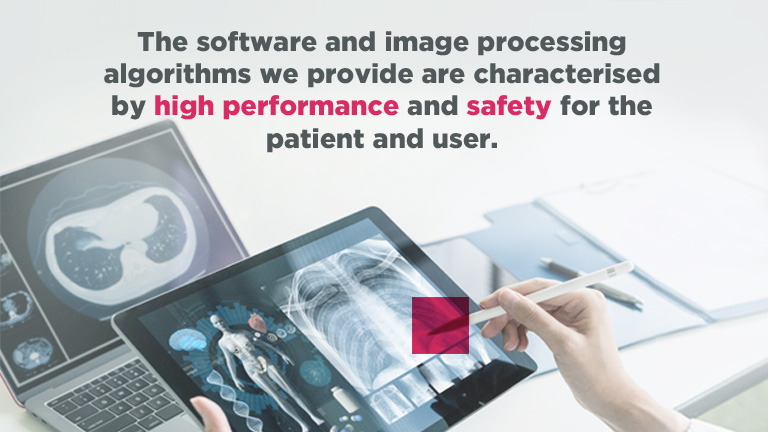Software as a Medical Device – Graylight Imaging is now ISO 13485
November 2023 marked the end of the long road we went through to be certified to ISO 13485:2016. The external audit by TUV NORD, completed two weeks ago, found no issues, putting us on track for certification. We started reviewing and adapting our processes to ISO 13485:2016 in January 2023, so the almost year-long project of working on the Quality Management System has had the desired effect.
The Purpose of ISO 13485 at Graylight Imaging
In our company, we specialize in producing software for medical device manufacturers, specifically relating to medical imaging and numerical analysis. Despite our competence and experience, we recognized our customers’ need for us to be certified to the ISO 13485:2016 standard. Our software and its accompanying documentation helped our customers achieve CE certification for their medical devices, ensuring they met ISO 13485:2016 criteria and could launch them in the market. In some cases, additional work and documentation ensured compliance. Having us certified to ISO 13485:2016 solves this problem, as the compliance of our software development processes with the regulations has already been verified by an independent, external audit

QMS standard for medical device development
Graylight Imaging has had a Quality Management System in place since almost the beginning of its existence in 2016, first as a department within Future Processing S.A. and since 2021 as a subsidiary. This means that we have 7 years of experience in producing software for medical devices by current standards. All the experience and good practices we have gathered during this time are reflected in the processes and procedures included in our Quality Management System.
Over time, experience shows the QMS can diverge from employee practices, rendering procedures invalid. Such a ‘dead’ QMS no longer fulfills its role, and the organization runs the risk that the products it produces will not comply with regulations. The QMS is often handled by a limited group of employees. This can be a problem because these employees may not be familiar with the specific processes of the departments they’re overseeing.
To ensure compliance with current standards, organizations should appoint a process owner for each process. This owner, typically the department head, is responsible for maintaining up-to-date QMS records and ensuring adherence to them. Furthermore, internal audits verify this adherence.
The advantages of high-quality standards
Working in compliance with standards is always well appreciated. This truism is particularly applicable in the healthcare industry, as the products we make serve patients. Their purpose is to prolong their lives through effective diagnosis and subsequent treatment. At GLI, we carry out our work with the greatest care. When we talk about the quality of a medical device, we consider several factors. First and foremost, the code itself and its documentation must be well-crafted. In addition, we prioritize patient safety by conducting a thorough risk analysis from their perspective. Finally, the user’s experience is crucial, so we ensure the device is user-friendly and easy to operate.
This approach allows us to undertake work on medical devices that are difficult and have a major impact on the patient’s treatment process. We are convinced that maintaining high standards during our work not only allows us to ensure the high effectiveness of medical devices but also makes them safe for patients. An additional advantage of this approach is that the software we provide is extensively and meticulously tested. This ensures that the number of errors and failures is very low and occurs mainly due to factors external to and beyond the control of the software.

Trust GLI engineers as a high-quality tech partner
At GLI we prioritize the highest standards and regulatory compliance throughout its operations. This commitment to quality makes us a trusted partner for medical device manufacturers. We offer high-performance software and image processing algorithms, ensuring safety for both patients and users.
Our dedication to excellence resonates with a diverse clientele. We value collaborating with their R&D departments to develop cutting-edge solutions. Additionally, we partner on dedicated software for smartphone consultations, showcasing the breadth of our services.
Our specialists in machine learning, DevOps, cloud solutions, testing, IT security, medical imaging, and business analysis support the development of our customers’ medical devices and products. Having a team with a wide range of competencies allows us to develop specialised software for medical devices: from web applications and cloud solutions through desktop applications to mobile device applications. We carry out the process of verifying the performance of the software we produce and support our clients during its validation in a real-world environment.
Leveraging a network of Polish and European clinical experts, we guide clients through data preparation for AI models, medical device testing, and usability evaluation. Our team upholds the highest standards of diligence and professionalism in both maintaining existing medical devices and developing new versions through updates. All our activities comply with ISO 13485:2016 standards.